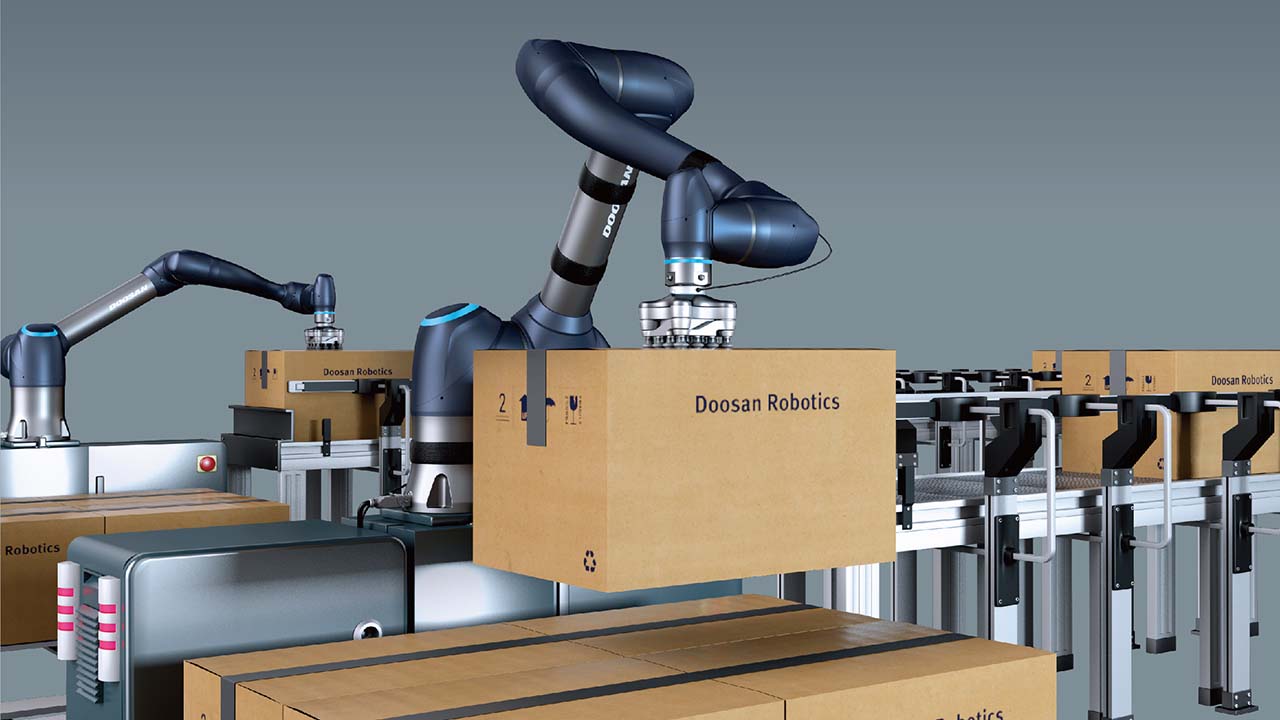
https://diverseco.com.au/wp-content/uploads/2022/10/Episode-image-callout-for-blog-1.jpghttps://diverseco.com.au/wp-content/uploads/2022/10/Full-episode-callout-image.jpg
The cobot itself is just an arm, at the end of the day, and cannot do anything itself besides move around until you put something on the end of the arm – this is where end of arm tooling (also known as end effectors, or grippers) comes in. The grippers and various tools that are available are vast: from a simple two-finger or three-finger mechanism to grip parts, to vacuum cups to vacuum-hold boxes or parts – there is a significant variety of end of arm tools available. Our end of arm tooling supplier, OnRobot, even have tools such as screwdrivers, polishing heads, sanding units, and more for unique and specific applications.
The typical applications for cobots
- Pick and place: picking up a part and placing it into a box or the next assembly process.
- An assembly process such as screwdriving.
- A finishing process such as welding, sanding, or polishing.
- Palletising at the end of the line, where parts or products are packed into a box and that box is required to be put onto a pallet for shipping or storage.
Those are the typical processes that we see as the ideal application for collaborative robots.
Cobots augment the processes that humans are currently performing
It is indeed an augmentation of the process. Keep in mind, that most of the processes that humans do can be fully automated with the use of special purpose machinery, but the costs of implementation of that machinery is limited to the largest manufacturers that can afford to spend upwards of $1M. For businesses in the small to medium size range, they can’t justify the cost of these specialised tools, therefore the human element is the better way to go. However, if we can allow those humans to be doing the value part of the process and let cobots, which are a much lower cost of implementation, do the repetitive and boring tasks then at the end of the day it adds significant value to the business.
What about unique applications? Do custom or bespoke tools exist?
Yes, absolutely they do exist. We are fortunate within Diverseco that we have the people and skillset in-house that have years of robot application experience and know the ideal end of arm tooling for any application requirement. Having these people within our own team – the designers and engineers – allow us to design a process that is not off-the-shelf and is instead totally bespoke to the application you require. This can be picking up extremely fine items, to very heavy items, and manipulating them in a way that you can’t necessarily do with an off-the-shelf gripping mechanism. This is a major strength of ours, and we look at what the customer needs and what the end result needs to be. For example, it also might be outside of the gripper or end of arm tool that will enable the application, like a lifting mechanism or traversal track – a 7th axis – that makes the whole process more versatile and valuable at the end of the day.
https://diverseco.com.au/wp-content/uploads/2022/10/Onrobot-lift-100-with-doosan-cobot.jpg
Doosan cobot with OnRobot Lift100 for palletising applications
One of the advantages of the 7th axis – in this case the lifting mechanism (Lift100) from OnRobot – is that it is fully collaborative and as such is a good safety element and allows us to stack pallets up to 2.2m. With container transport, the typical height of a container inside is about 2.2m, but often there is only an automatic palletising unit that palletises to 1.4m-1.6m, leaving a lot of head space in the container that is paid for but not used. If the products that are being palletised are going into a container for shipment, whether it be across Australia or across the world, you want to maximise your volume uptake within the container. Having the ability to utilise a cobot to palletise to the full 2.2m is a real game-changer; typically you would have to go to an industrial robot to get to that 2.2m pallet stacking height, now we can do it with a cobot, which makes effective palletising more accessible to the small to medium businesses.
With the situation in Australia now where there is a lot more production coming back to Australia – reshoring of manufacturing in Australia – it means that manufacturers are shipping their products all over the world and that means that there are a whole lot more containerised product that are being moved around, so let’s maximise the value of the container volume and stack our pallets to the maximum height. That is where the cobot with the lifting mechanism comes into its own.

